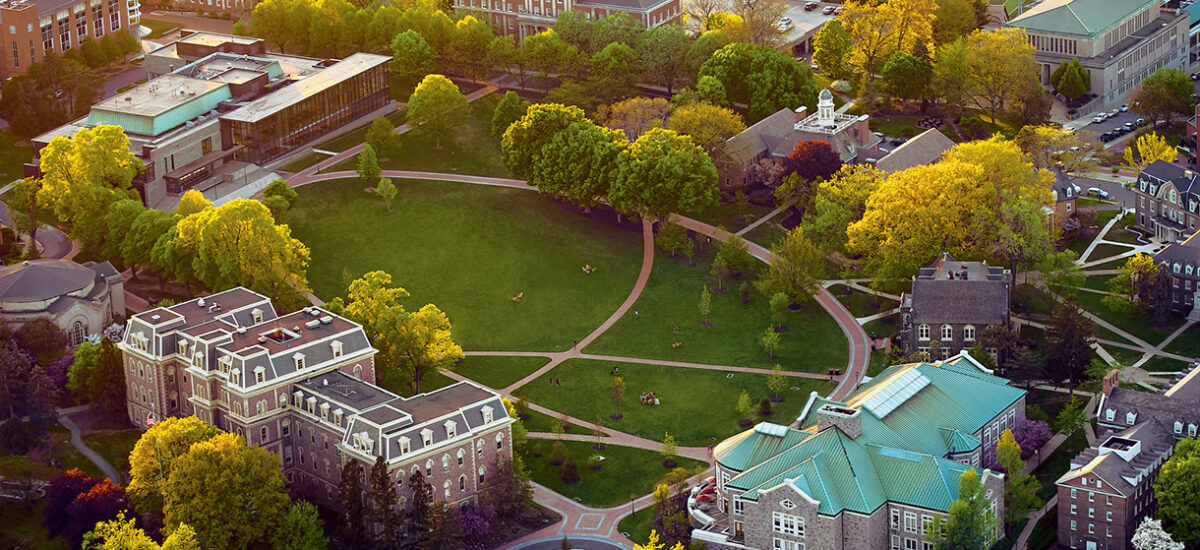Whereas the capstone teams consisted only of senior Engineering Studies majors, the project team is made up of a small class section of the Sustainable Solutions course. This elective is an upper level Engineering Studies class that is open to all majors. It takes a real-world problem solving and requires the students to develop a solution, which in the case of the Spring 2020 class, focused on the plan to improve the atmosphere of Acopian Engineering Center. The project team, referred to as Greening Acopian at times, consisted of two juniors and three seniors in EGRS, in addition to the course professor (Cohen): Dominique (Nika) Cinicola, Bryce Currie, Diana De La Torre, Major Jordan, and Lisa Sholtz.
Each student had a specific role that was essential to the development of the final project. The team’s acting Project Manager and course adviser was Professor Cohen. Having been the professor in charge of senior capstones in the past, he was familiar with the idea of integrating art and the environment into Acopian. In his role, he assisted in key communications with various resources on campus, ran the weekly meetings, and provided suggestions on the overall design. Nika Cinicola was the Communications Director, a role that required her to focus on organizing meetings, presentations, the final report, and the Greening Acopian website. Bryce Currie acted as the Chief Economist where he worked on determining the overall cost of Lafayette Gardens. By working with Professor Liu in the Economics Department, as well as contacts from potential vendors, Currie developed a cost estimate that accounted for both financial and non-financial attributes. A survey was created during the semester for the purpose of assessing the potential non-financial benefits, but was not distributed to the Lafayette community due to the sudden transition to virtual learning in March following the COVID-19 outbreak. The role of Environmental and Sustainability Engineer was taken on by Diana De La Torre. Throughout the semester, she investigated ways to ensure that the space became one for both the college community and the various living organisms that will interact with it. She looked specifically at the possibility of incorporating native plants and bat boxes on the living wall to help increase biodiversity and also determined the plant types that will be used in the surrounding pollinator gardens. Major Jordan took on the role of the Structural Engineer where he was responsible for determining the various structural aspects for the proposed design and ensuring that the final structure will be both structurally sound and financially feasible. His role has thus involved accounting for all necessary parts of the structure, calculating the stress and load of the structure, and ensuring that the proper procedures for installment are outlined. Lastly, Lisa Sholtz was the team’s Artistic Design Director and was responsible for developing the visual components of the project in a way that created a cohesive space that will be aesthetically appealing, practical, sustainable, and feasible. Sholtz has been in charge of creating a complete design plan for Lafayette Gardens, as well as developing a computer-generated rendering of the final design.
Together, this six-person team brought into reality a design that has the capacity of improving the atmosphere associated with Acopian. Through the assistance of on-campus resources, especially Professor Mary Wilford-Hunt, Professor Joe Biondo, Professor Jim Toia, and Professor Scott Hummel, the project team was able to develop an entirely unique and beneficial space for the Lafayette campus. While the project scope may have started off small, with the team looking only at the wall itself, it gradually expanded to include the surrounding ground area thus creating a collaborative space for community members of all different disciplines and interests to interact and learn.
Click here to proceed to Chapter 2: Design and Layout
